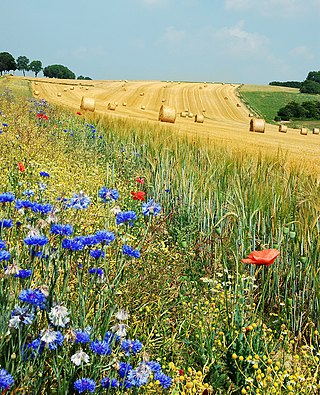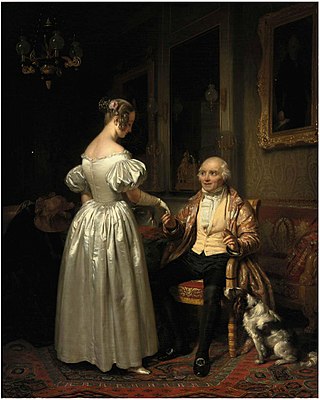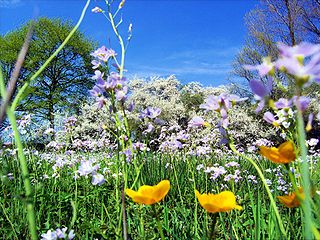Related Research Articles
A solar equinox is a moment in time when the Sun crosses the Earth's equator, which is to say, appears directly above the equator, rather than north or south of the equator. On the day of the equinox, the Sun appears to rise "due east" and set "due west". This occurs twice each year, around 20 March and 23 September.

The Guatemalan Armed Forces consists of the National Army of Guatemala, the Guatemalan National Defense Navy, the Guatemalan Air Force, and the Presidential Honor Guard.
June is the sixth month of the year in the Julian and Gregorian calendars and is the second of four months to have a length of 30 days, and the third of five months to have a length of less than 31 days. June contains the summer solstice in the Northern Hemisphere, the day with the most daylight hours, and the winter solstice in the Southern Hemisphere, the day with the fewest daylight hours. June in the Northern Hemisphere is the seasonal equivalent to December in the Southern Hemisphere and vice versa. In the Northern Hemisphere, the beginning of the traditional astronomical summer is 21 June. In the Southern Hemisphere, meteorological winter begins on 1 June.

October is the tenth month of the year in the Julian and Gregorian calendars and the sixth of seven months to have a length of 31 days. The eighth month in the old calendar of Romulus c. 750 BC, October retained its name after January and February were inserted into the calendar that had originally been created by the Romans. In Ancient Rome, one of three Mundus patet would take place on October 5, Meditrinalia October 11, Augustalia on October 12, October Horse on October 15, and Armilustrium on October 19. These dates do not correspond to the modern Gregorian calendar. Among the Anglo-Saxons, it was known as Winterfylleth (Ƿinterfylleþ), because at this full moon, winter was supposed to begin.

September is the ninth month of the year in both the Gregorian calendar and the less commonly used Julian calendar. In modern day, September has 30 days. September in the Northern Hemisphere and March in the Southern Hemisphere are seasonally equivalent.
A solstice is an event that occurs when the Sun appears to reach its most northerly or southerly excursion relative to the celestial equator on the celestial sphere. Two solstices occur annually, around June 21 and December 21. In many countries, the seasons of the year are determined by the solstices and the equinoxes.

Summer is the hottest of the four temperate seasons, occurring after spring and before autumn. At or centred on the summer solstice, daylight hours are longest and darkness hours are shortest, with day length decreasing as the season progresses after the solstice. The earliest sunrises and latest sunsets also occur near the date of the solstice. The date of the beginning of summer varies according to climate, tradition, and culture. When it is summer in the Northern Hemisphere, it is winter in the Southern Hemisphere, and vice versa.

Father's Day is a holiday honoring one's father, or relevant father figure, as well as fatherhood, paternal bonds, and the influence of fathers in society. The single most common date among world countries is the third Sunday of June, which was founded in the state of Washington, United States, by Sonora Smart Dodd in 1910.

Spring, also known as springtime, is one of the four temperate seasons, succeeding winter and preceding summer. There are various technical definitions of spring, but local usage of the term varies according to local climate, cultures and customs. When it is spring in the Northern Hemisphere, it is autumn in the Southern Hemisphere and vice versa. At the spring equinox, days and nights are approximately twelve hours long, with daytime length increasing and nighttime length decreasing as the season progresses until the Summer Solstice in June and December.

Easter Monday is the second day of Easter and a public holiday in some countries. In Western Christianity it marks the second day of the Octave of Easter; in Eastern Christianity it marks the second day of Bright Week.

In Mexico there are three major kinds of public holidays:
The following is a list of Public holidays in Jamaica, which includes Christian holidays and secular holidays.

The September equinox is the moment when the Sun appears to cross the celestial equator, heading southward. Because of differences between the calendar year and the tropical year, the September equinox may occur from September 21 to 24.

The March equinox or northward equinox is the equinox on the Earth when the subsolar point appears to leave the Southern Hemisphere and cross the celestial equator, heading northward as seen from Earth. The March equinox is known as the vernal equinox in the Northern Hemisphere and as the autumnal equinox in the Southern Hemisphere.

The summer solstice or estival solstice occurs when one of Earth's poles has its maximum tilt toward the Sun. It happens twice yearly, once in each hemisphere. For that hemisphere, the summer solstice is the day with the longest period of daylight and shortest night of the year, when the Sun is at its highest position in the sky. At either pole there is continuous daylight at the time of its summer solstice. The opposite event is the winter solstice.
Lists of holidays by various categorizations.

A season is a division of the year based on changes in weather, ecology, and the number of daylight hours in a given region. On Earth, seasons are the result of the axial parallelism of Earth's tilted orbit around the Sun. In temperate and polar regions, the seasons are marked by changes in the intensity of sunlight that reaches the Earth's surface, variations of which may cause animals to undergo hibernation or to migrate, and plants to be dormant. Various cultures define the number and nature of seasons based on regional variations, and as such there are a number of both modern and historical cultures whose number of seasons varies.

The COVID-19 pandemic in Guatemala was a part of the worldwide pandemic of coronavirus disease 2019 caused by severe acute respiratory syndrome coronavirus 2. The virus was confirmed to have reached Guatemala in March 2020.
References
- ↑ "Guatemala Holidays 2017 - Guatemala Holidays and Festivals - Guatemala Holiday Calendar 2017" . Retrieved 20 March 2017.
- ↑ "TuSalario.org/Guatemala. Derechos laborales: ¿Cuáles son los días de asueto?" . Retrieved 20 March 2017.
- ↑ "Guatemala. Código del Trabajo" . Retrieved 20 March 2017.
- 1 2 "Así quedarán los feriados en Guatemala para el 2020 – Prensa Libre" (in Spanish). Prensa Libre. Retrieved September 16, 2020.
- ↑ "Día de la Raza". elPeriodico. Retrieved September 16, 2020.
- ↑ "Holidays and observances in Guatemala in 2021". www.timeanddate.com. Retrieved September 16, 2020.
- ↑ "Holidays and observances in Guatemala in 2022". www.timeanddate.com. Retrieved September 16, 2020.
- ↑ "Holidays and observances in Guatemala in 2023". www.timeanddate.com. Retrieved September 16, 2020.
- ↑ "Holidays and observances in Guatemala in 2024". www.timeanddate.com. Retrieved September 16, 2020.
